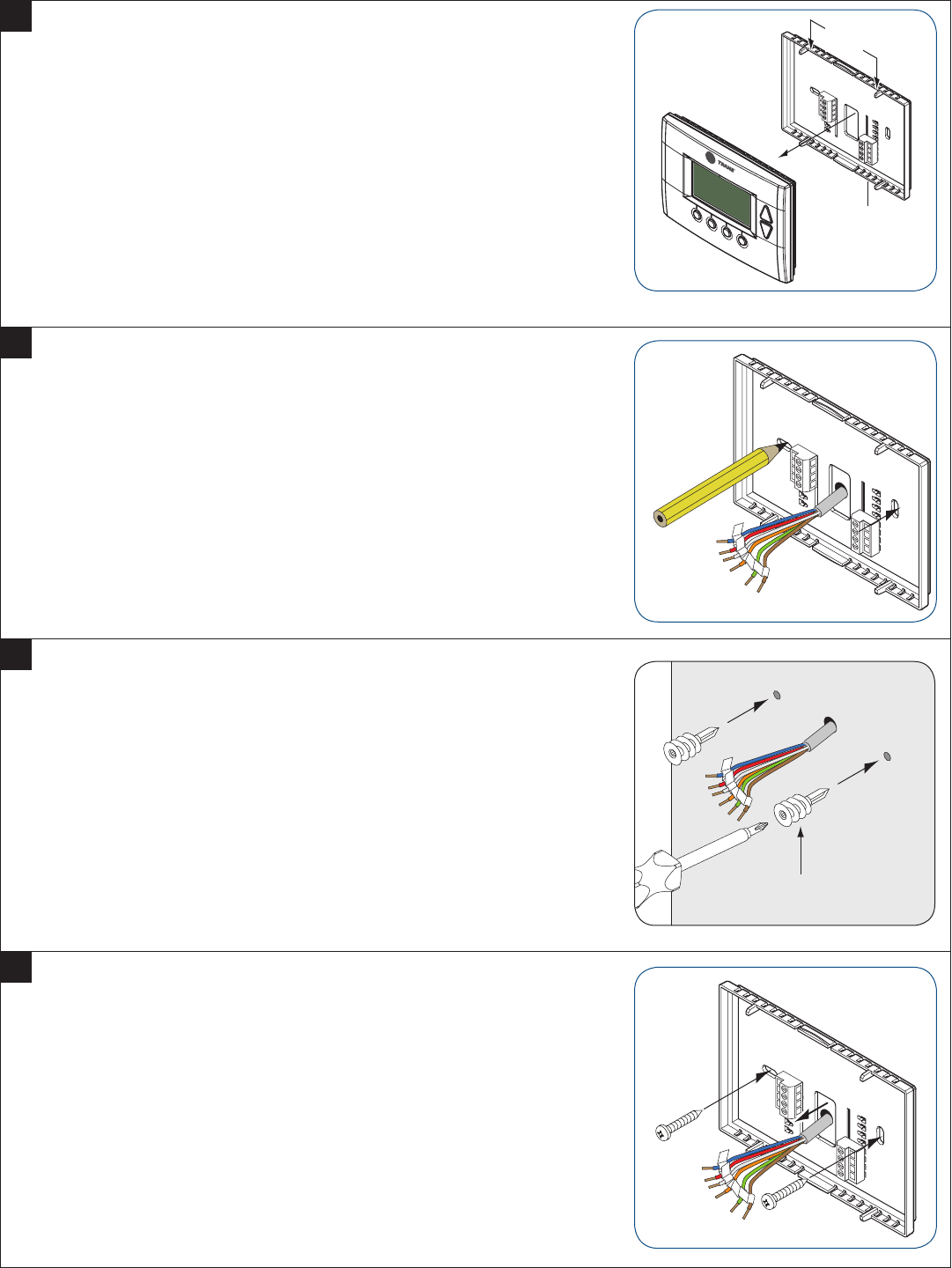
5
10
Install new wall plate.
a. Pull wires through hole in center of wall plate.
b. Locate the new wall plate over existing opening.
c. Attach wall plate to wall using two screws provided. Do not overtighten.
7
Separate the face of the new thermostat from the wall plate.
Apply pressure at two tabs on top of wall plate to release it.
• NOTE: It is not recommended that this Z-wave thermostat be mounted
onto metal structures. Metal may affect the radio frequency (RF)
communication between the thermostat and the Z-wave signal to the
Schlage Bridge.
8
Mark two mounting holes using new wall plate.
a. Pull wires through hole in center of wall plate.
b. Locate the new wall plate over existing opening.
c. Mark two holes with pencil.
d. Use a level to verify that the two holes locations are level.
e. Correct holes locations as needed.
9
Prepare two mounting holes.
a. Drill1/16”pilotholesinthetwolocationsthatweremarkedinstep9.Ifmounting
todrywallwithnostudsbehindit,enlargepilotholesto1/8”foranchors.
b. If using anchors, screw them into the holes.
24RC
G
Y1
Y2
RS2
RS2
HC
24C
24RH
W1
W2/O
RS1
RS1
H1
Wall plate
Tabs
24RC
G
Y1
Y2
RS2
RS2
HC
24C
24RH
W1
W2/O
RS1
RS1
H1
Y2
24RC
G
Y1
Y2
RS2
RS2
HC
24C
24RH
W1
W2/O
RS1
RS1
H1
Y2
